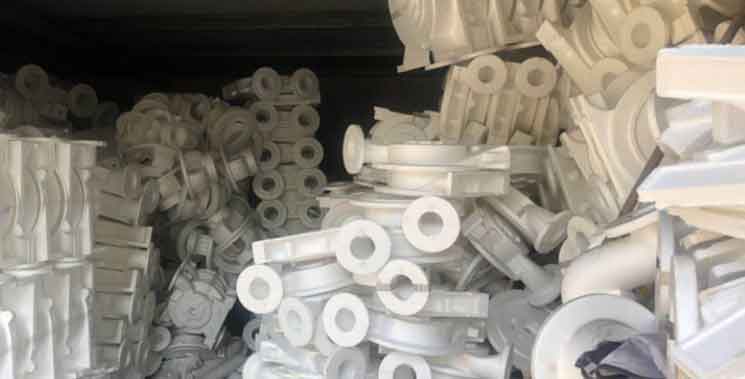While lost foam casting offers numerous advantages, there can be challenges when it comes to large-scale production. However, with proper planning and implementation of certain strategies, these challenges can be overcome. Here are some key challenges and ways to address them in large-scale lost foam casting production:

- Pattern Integrity and Stability: Maintaining the integrity and stability of foam patterns becomes crucial in large-scale production. To address this challenge:
- Opt for higher density and more durable foam materials that can withstand the handling and production process.
- Implement robust quality control measures to ensure consistent foam pattern quality and detect any defects early on.
- Properly store and handle foam patterns to prevent damage or deformation.
- Pattern Coating Consistency: Achieving consistent and uniform coating thickness on a large number of foam patterns can be challenging. Consider the following strategies:
- Develop a well-defined coating process with clear specifications and standard operating procedures.
- Implement automated or semi-automated coating systems to ensure consistent and controlled coating application.
- Conduct regular inspections and measurements to monitor coating thickness and make necessary adjustments.
- Pouring System Design and Metal Flow: Designing an efficient pouring system and achieving proper metal flow throughout a large-scale production run is essential. Consider the following approaches:
- Optimize the gating and sprue system design to ensure uniform metal distribution and minimize turbulence during pouring.
- Utilize computer simulations or flow analysis software to optimize the design and identify potential issues before production.
- Monitor metal flow and filling using sensors or visual inspections to identify any issues or variations.
- Handling and Shaking Out of Castings: Managing a large number of castings during the shakeout process can be challenging. Address this challenge by:
- Implementing efficient and automated shakeout systems to handle large volumes of castings with minimal manual intervention.
- Designing appropriate handling equipment and fixtures to safely and efficiently handle the castings during shakeout.
- Prioritizing worker safety and providing proper training and protective equipment for handling large quantities of castings.
- Post-Casting Processing and Finishing: Large-scale production often requires streamlined post-casting processing and finishing operations. Consider the following strategies:
- Implement efficient and automated machining or finishing processes to handle large volumes of castings.
- Optimize post-casting operations to minimize cycle time and maximize productivity.
- Utilize advanced technologies such as robotics or automated systems for consistent and precise post-casting processing.
- Quality Control and Inspection: Maintaining consistent quality control throughout large-scale production is crucial. Ensure the following:
- Implement comprehensive quality control processes, including regular inspections, dimensional checks, and non-destructive testing techniques.
- Conduct frequent audits to ensure adherence to quality standards and identify any issues or process deviations early on.
- Provide adequate training to the workforce involved in quality control to ensure consistent and accurate inspections.
By addressing these challenges through proper planning, process optimization, and implementation of suitable technologies, large-scale lost foam casting production can be successfully managed. Continuous monitoring, quality control, and process improvement are key to overcoming these challenges and achieving consistent, high-quality castings in large volumes.
